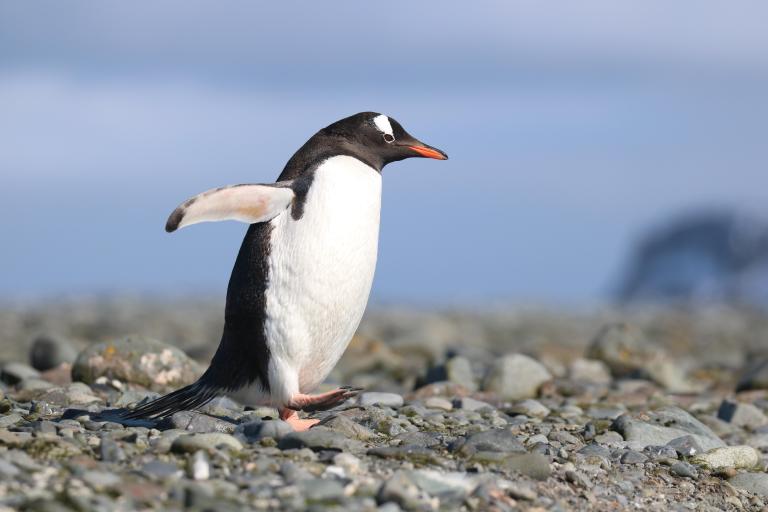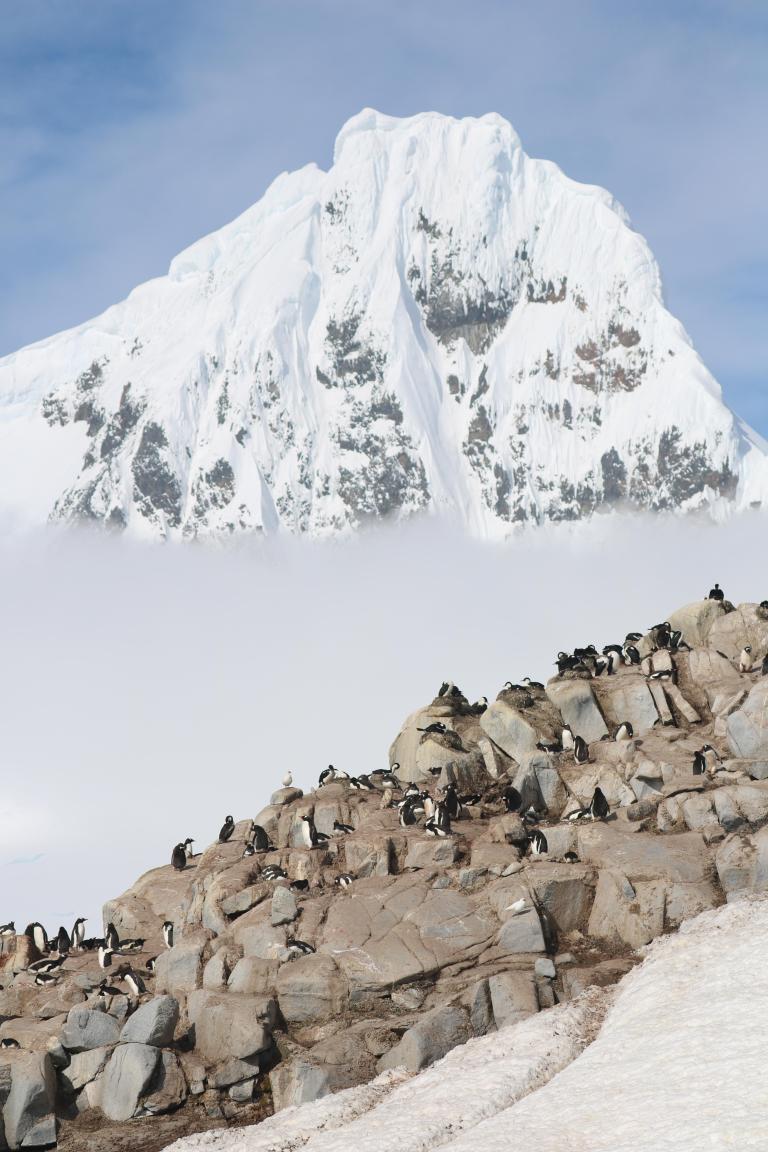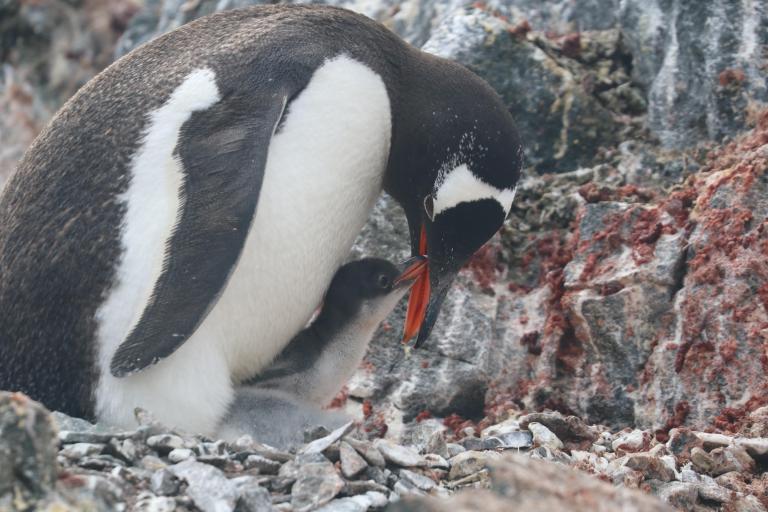Today we have part 2 of Robert Lang’s seven-part series of his trip to Antarctica in a small boat (part 1 is here). And today the PENGUINS make their appearance, including two videos. Robert’s captions are indented, and you can click the photos to enlarge them.
Antarctica Part 2: Gentoo Penguins
We saw three types of penguins along the Antarctic Peninsula: Adélies (Pygoscelis adeliae), Chinstraps (Pygoscelis antarcticus), and Gentoos (Pygoscelis papua). The most common were Gentoos, which will be the topic of this collection.
All three are so-called “brush-tailed” penguins, with short, stiff tails that they use like the third leg of a stool when standing and use like a rudder when swimming. Gentoos are distinguished by their orange bill and white patches just above the eyes:

Their colonies are cacophonous, as pairs call with a gurgling “haw-hee-haw” call that, when massed, sounds like a herd of donkeys:
They also have long orange toes, that look to me like a bundle of black-tipped carrots.
Although we often saw them nesting near the shore, we also saw rookeries hundreds of feet up the cliffs. Hard to imagine having to climb up and down every time they go out for food or return to the nest:
To get to and from their rookeries, they follow well-trammeled pathways across snow and rocks. In the snowfields, their paths get beaten down into troughs, which are colored by their guano, pink from the diet of krill:
While their waddles on land are almost comical, once in the water, they are graceful and agile. Here’s a group of them “porpoising,” leaping out of the water as they travel:
And to get a sense of their speed under (and over) water, here’s a short video of a group feeding near our two zodiacs:
They are devoted parents. The parents alternate tending the egg(s) and feeding. Here’s one sitting on its egg while it tends the pebbles that make up the nest. If you turn up the sound, you can hear their calls:
Here’s a gentoo feeding its chick:
And one feeding two chicks:
A close-up of a chick. Note the fringed tongue:
Gentoos come ashore to molt and molt all at once. Not many people know (*) that when a gentoo molts its head like this, it takes about 3 weeks to grow a new one:
(*) “Not many people know” because of course that’s not true. (They do molt their feathers over the course of a few weeks.) They also have very flexible necks, as that photo shows.
One of the islands we visited, Deception Island, is an active volcano and had steam vents along the shore. They made for some eerie photos and videos: “Gentoos in the Mist,” as we visited these gentle not-quite-giants:
Next: More penguins: Adélies and Chinstraps!










There used to be a player for the Pittsburgh Penguins called Robert Lang. 😉
Breathtaking … and cute!
Molting head! LOL! Thanks for the excellent photos!
Thanks Robert. I love Gentoos in the mist.
Very interesting! The video is very enlightening. The penguins seem very adept in the water—and fast!
Beautiful! I really like the fringed tongue as well as the roof of the mouth to make sure those slippery krill don’t slip out. I’ve always thought of Gentoos as wearing white headphones or earmuffs.